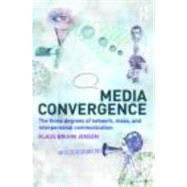
Note: Supplemental materials are not guaranteed with Rental or Used book purchases.
Purchase Benefits
What is included with this book?
| List of illustrations | p. vii |
| Preface | p. ix |
| A critique of communication | p. 1 |
| Introduction: communication - the very idea | p. 3 |
| The end of communication | p. 5 |
| Case study: speaking of the weather - climate change | p. 7 |
| Communication in theory and practice | p. 10 |
| Outline of the volume | p. 13 |
| Erro, ergo sum: communication and pragmatism in the history of ideas | p. 19 |
| Communicating with the classics | p. 20 |
| Re-actualizing Aristotle | p. 22 |
| Kant and other Copernican turns | p. 25 |
| Peircean pragmatism | p. 28 |
| Case study: interpretive communities | p. 32 |
| The linguistic turn | p. 35 |
| A communicative turn | p. 37 |
| Differences that make a difference: the art and science of media and communication research | p. 39 |
| A conflict of the faculties | p. 40 |
| When is meaning? | p. 41 |
| Case study: three differences that make a difference | p. 44 |
| Information into meaning | p. 47 |
| Communication - between transmission and ritual | p. 49 |
| Performativity and interactivity | p. 51 |
| The upper and lower thresholds of communication | p. 55 |
| Programmable media | p. 57 |
| Media of three degrees | p. 59 |
| Media matters: the material conditions of communication | p. 61 |
| Determination in the first instance | p. 62 |
| Material media of three degrees | p. 64 |
| Case study: three-step flow | p. 71 |
| From matter to media | p. 74 |
| A fourth degree | p. 80 |
| Media meanings: the discourses, genres, and modalities of communication | p. 83 |
| The medium was the message | p. 84 |
| Media and modalities | p. 85 |
| Is there a text in this network? | p. 88 |
| Case study: searching media - search engines | p. 92 |
| Meta-communication in three degrees | p. 94 |
| Turns and transitions | p. 100 |
| Media institutions: between agency and structure | p. 103 |
| Institutions-to-think-with | p. 104 |
| The duality of communication | p. 105 |
| Case study: what's mobile in mobile communication? - mobile telephones | p. 108 |
| The right to communicate | p. 110 |
| Some rights reserved | p. 117 |
| The double hermeneutics of media and communication research | p. 123 |
| Media of science: doing communication research | p. 125 |
| Signs of science | p. 126 |
| New media, old methods | p. 127 |
| Information and inference | p. 131 |
| Case study: generalizing about generalization | p. 140 |
| Unification in the final instance | p. 142 |
| The future of communication: pragmatism between modernism and postmodernism | p. 147 |
| "Nothing is as practical as a good theory" | p. 148 |
| Theories in practice | p. 149 |
| Modernist pragmatism | p. 151 |
| Postmodernist pragmatism | p. 156 |
| Case study: cartoon communications - the Fyllands-Posten Muhammad cartoons controversy | p. 160 |
| A third way | p. 163 |
| References | p. 167 |
| Index | p. 189 |
| Table of Contents provided by Ingram. All Rights Reserved. |
The New copy of this book will include any supplemental materials advertised. Please check the title of the book to determine if it should include any access cards, study guides, lab manuals, CDs, etc.
The Used, Rental and eBook copies of this book are not guaranteed to include any supplemental materials. Typically, only the book itself is included. This is true even if the title states it includes any access cards, study guides, lab manuals, CDs, etc.